The Dominican Republic is a treasure trove of culinary delights, where each dish is a vibrant blend of history and flavor. The island’s most famous food is not just a meal; it’s a narrative of community, family, and celebration. It’s where the warmth of the Caribbean sun meets the richness of the soil, creating flavors that resonate with the rhythm of Dominican life.
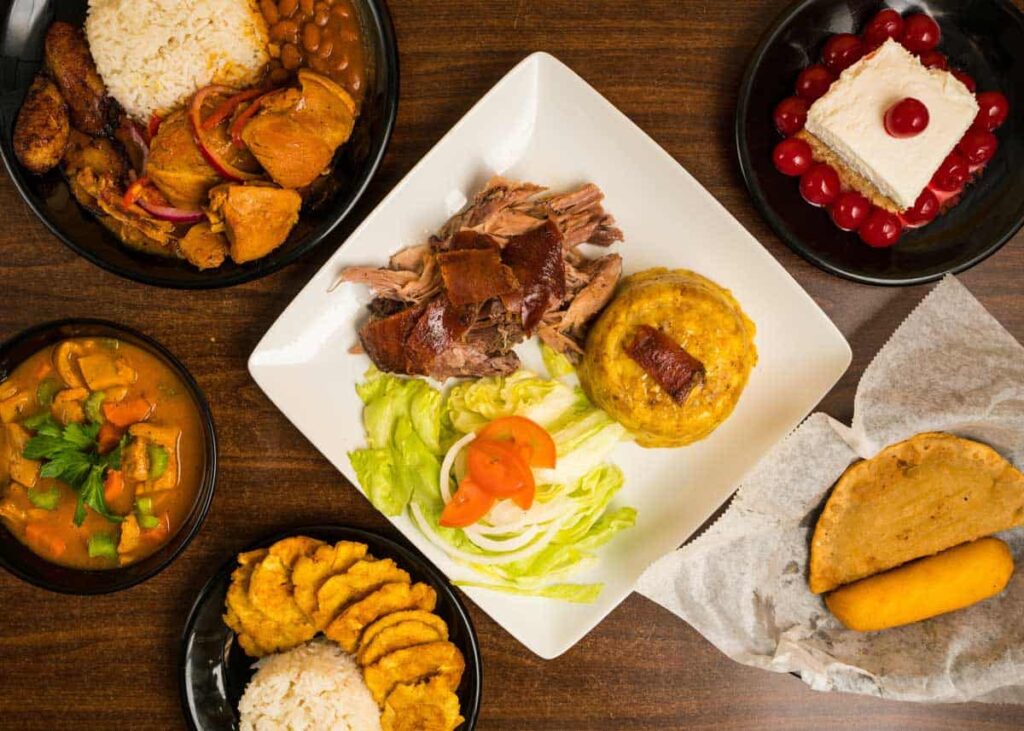
Step into the world of Dominican cuisine, where simplicity meets sophistication. Here, the food is an art form, a cultural expression that invites you to connect with the island’s soul. From the bustling streets of Santo Domingo to the serene beaches of Punta Cana, every morsel is a discovery, every recipe a legacy. Join us as we explore the dishes that have captured the hearts of locals and travelers alike. Let’s explore What is the most famous food in Dominican Republic.
The Heart of Dominican Cuisine
The Dominican Republic’s culinary heart beats with a rhythm set by its most iconic dishes. Among these, La Bandera stands as the national dish, a colorful representation of the nation’s flag and its culinary pride. This beloved meal consists of rice, red beans, and meat, typically chicken or beef, reflecting the simplicity and richness of the land. It’s a dish that brings families together, symbolizing unity and tradition.
Another cornerstone of Dominican breakfasts is Los Tres Golpes. This hearty morning feast features mangú, a mash made from green plantains, accompanied by fried eggs, fried cheese, and fried salami. It’s a meal that energizes the soul and prepares one for the day ahead, embodying the spirit of the Dominican morning.
When it comes to comfort food, Sancocho is the Dominican Republic’s warm embrace. This hearty stew combines a variety of meats with starchy vegetables like plantains, yuca, and yautia, simmered to perfection. Each spoonful is a dive into the depths of Dominican tradition, with flavors that tell stories of family gatherings, laughter, and the warmth of shared experiences. Sancocho isn’t just food; it’s comfort in a bowl, a culinary hug that embodies the Dominican spirit of community.
Street Eats and Sweet Treats
The streets of the Dominican Republic are a canvas for culinary artists, where the vibrant culture comes alive in the form of street food. Among the stars of this open-air theatre is the Chimichurri, or ‘Chimi’, a Dominican twist on the classic burger. Unlike its namesake, the Argentinian sauce, this chili is a handheld delight featuring a juicy beef patty seasoned with local spices, nestled in a soft Pan de Agua bun.
The patty is topped with a colorful medley of shredded cabbage, onions, and tomatoes and finished with a drizzle of the signature mayo-ketchup sauce. It’s a flavor-packed bite that captures the essence of Dominican street cuisine.
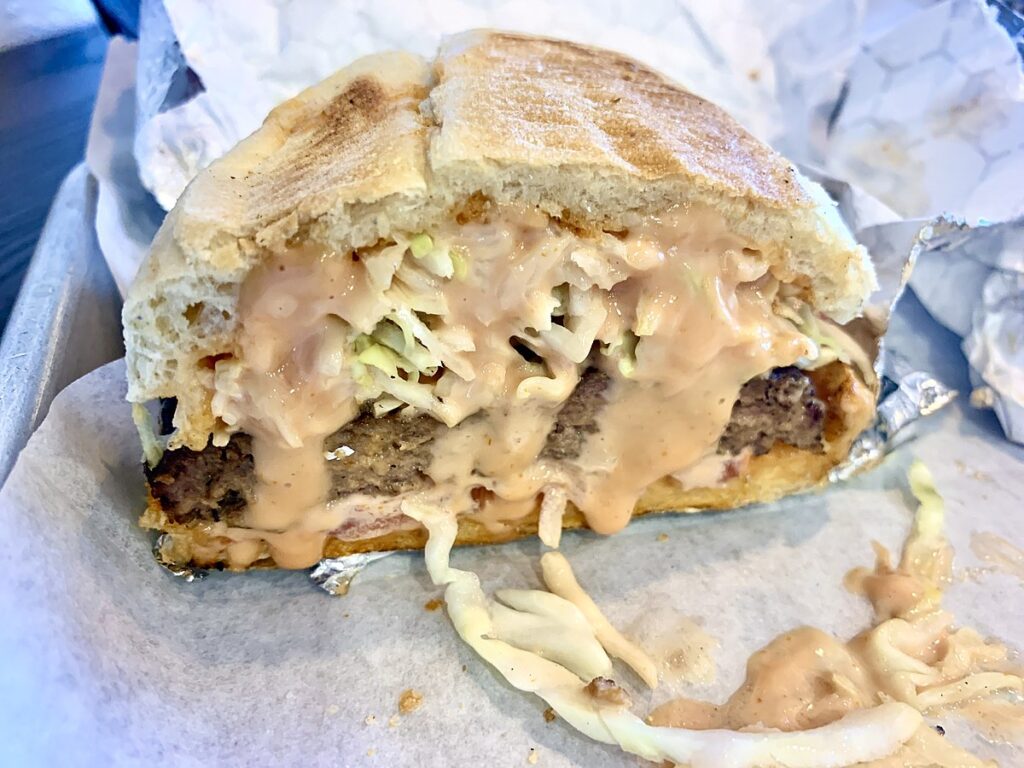
As the sun sets, the sweet tooth of the Dominican Republic awakens, and Dulce de Leche takes center stage. This beloved dessert is not just a treat; it’s a cultural icon. Dominican Dulce de Leche is a creamy, caramel-like candy that comes in various forms, from soft and chewy to firm and fudgy. It’s made by slowly cooking milk and sugar until they transform into a rich, sweet confection that’s often enjoyed in small, indulgent squares.

Whether it’s the classic Dulce de Leche en tabla, the curdled milk fudge known as Dulce de Leche cortada, or the semi-soft fudge with burnt bits called Concón de Leche, each variety is a testament to the Dominican love for desserts that are as sweet as the island life itself.
A Dive into Dominican Desserts
The Dominican Republic’s dessert scene is as rich and varied as its main courses. The sweet journey begins with Bizcocho Dominicano, the quintessential Dominican cake known for its airy sponge and sweet, meringue-based frosting. Often adorned with tropical fruits, this cake is a staple at celebrations and a beloved treat among locals.

Next, we encounter Habichuelas con Dulce, a unique dessert that turns the humble red bean into a sweet, creamy delight. This dish is traditionally served during Lent and Easter, combining soft beans with coconut milk, sweet potato, and a hint of cinnamon, creating a comforting and indulgent experience.
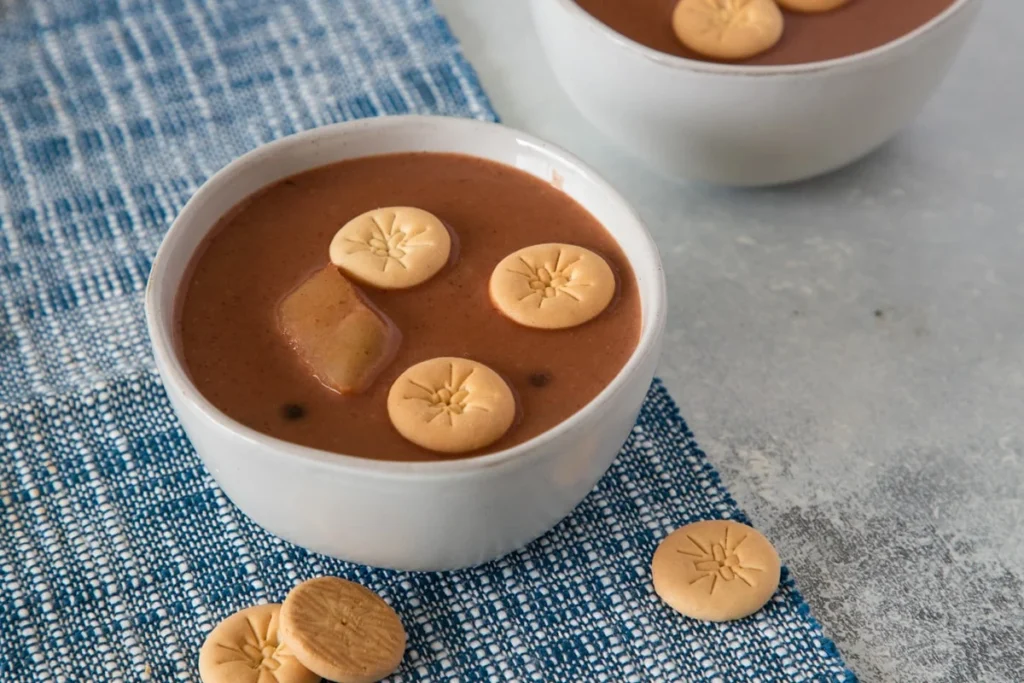
For a refreshing break, Morir Soñando offers a citrusy escape. This popular beverage, whose name translates to “die dreaming,” is a blend of milk and freshly squeezed orange juice, often enjoyed as a midday snack or a light dessert. Its creamy texture and zesty flavor make it an irresistible Dominican classic.
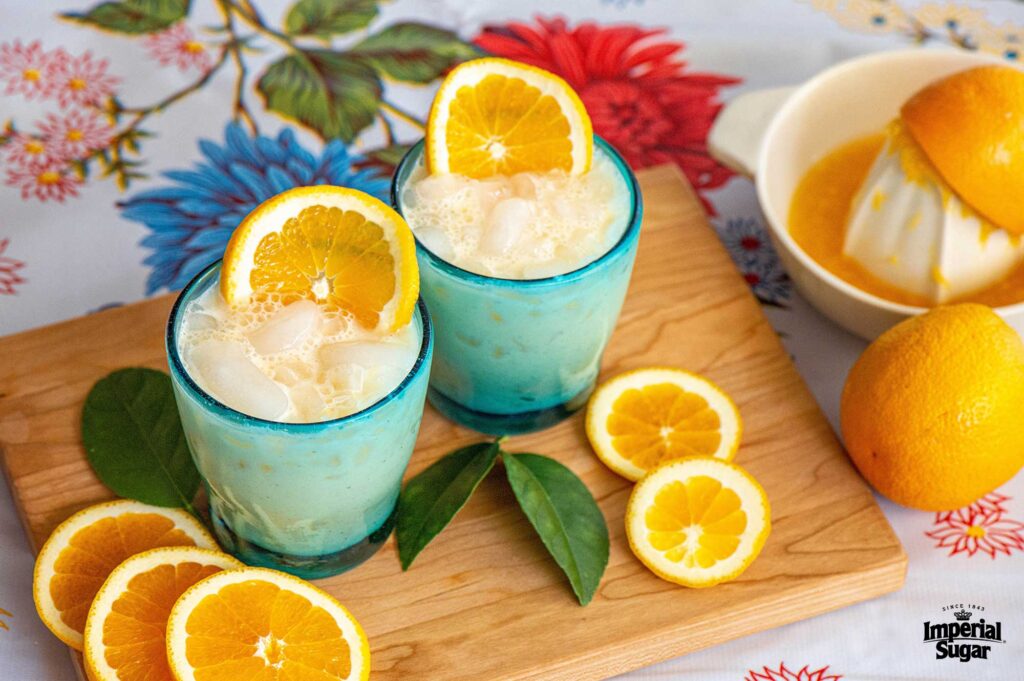
Lastly, no discussion of Dominican desserts would be complete without mentioning Mangu, despite its more common appearance at breakfast. This versatile dish of mashed plantains can also be sweetened and served as a dessert, showcasing the plantain’s ability to shine in both savory and sweet incarnations.
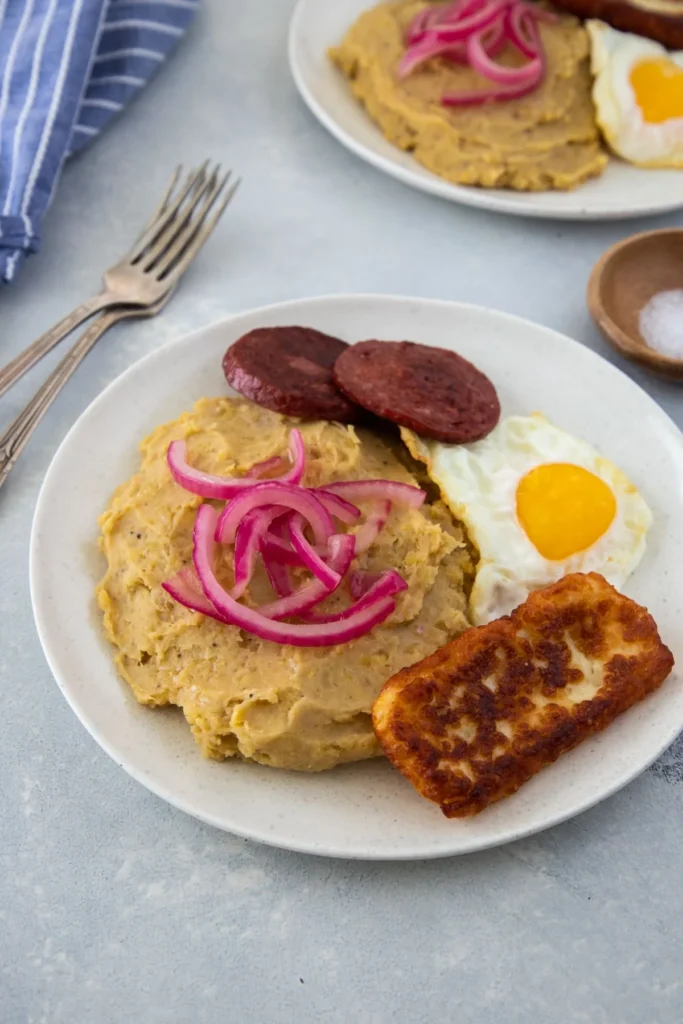
Each of these desserts represents a facet of the Dominican Republic’s culinary heritage, offering a sweet conclusion to any meal and a taste of the island’s joyful spirit.
The Fusion of Flavors in Dominican Cuisine
Dominican cuisine is a tapestry woven from the threads of its diverse cultural influences. It’s a fusion that celebrates the island’s history and its people’s creativity. The flavors of the Dominican Republic are a testament to the Taino, African, and Spanish heritages that have shaped the nation’s palate.
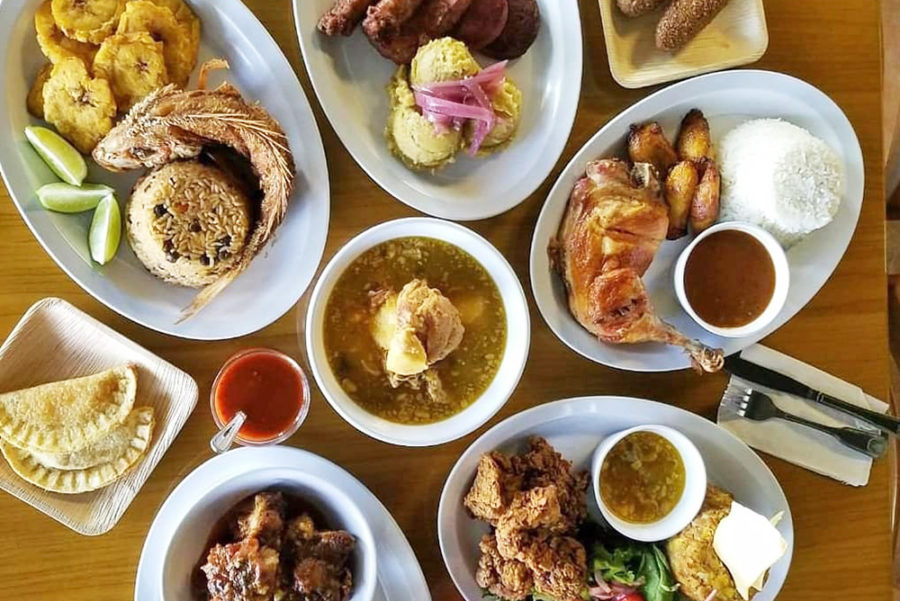
The Taino legacy lives on in dishes like Casabe, a flatbread made from cassava root, which is a versatile staple that accompanies many meals. The African influence is evident in the use of plantains and tubers, which are the backbone of many Dominican dishes. The Spanish touch is seen in the use of spices like nutmeg and vanilla, which add depth and warmth to the cuisine.
Dominican food is characterized by its hearty portions and its emphasis on meats, starches, and legumes. Rice, beans, and meat form the holy trinity of Dominican meals, often accompanied by a side of salad or fried plantains. Sofrito, a sautéed mix of herbs and spices, is the secret weapon in many recipes, infusing dishes with a burst of flavour that is unmistakably Dominican.
Seafood also plays a significant role in the Dominican diet, with the island’s coastal waters providing a bounty of fresh fish and shellfish. Dishes like Salpicon, a chilled seafood salad, showcase the freshness and variety of the ocean’s offerings.
In every bite of Dominican food, one can taste the history of the island, the stories of its people, and the love that goes into preparing each dish. It’s a culinary journey that invites you to savor the fusion of flavors that make Dominican cuisine truly unique.
What is the most famous food in Dominican Republic?
Celebrating Dominican Flavors: A Culinary Fiesta
Dominican cuisine is a vibrant fiesta of flavors, where each dish is a celebration of the island’s diverse cultural tapestry. The culinary journey through the Dominican Republic is not just about savoring the food; it’s about experiencing the rich history and the fusion of Taino, African, and Spanish influences that have shaped the nation’s palate.
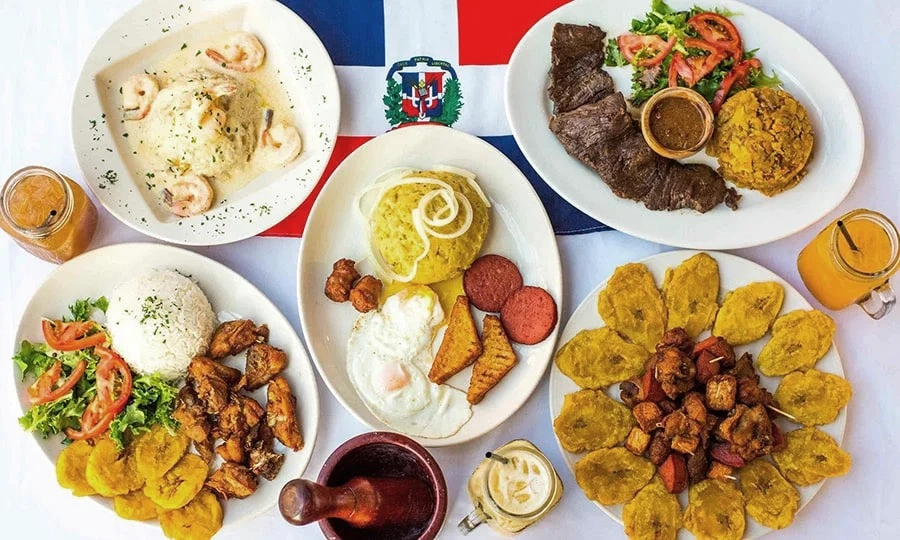
The Taino heritage is evident in the use of native ingredients like cassava and sweet potatoes, which are still staples in the Dominican diet today. These ingredients form the basis of many traditional dishes, such as Casabe, a crispy flatbread made from cassava flour, which is enjoyed with a variety of toppings or as an accompaniment to stews and soups.
African influences are deeply woven into the fabric of Dominican cuisine, introducing bold flavors and hearty dishes that have become synonymous with comfort food on the island. One can taste the African legacy in the rich stews and the use of plantains and tubers, which are the backbone of many Dominican dishes.
Spanish influences have left an indelible mark on the culinary landscape, with spices like nutmeg and vanilla adding depth and warmth to the cuisine. The Spanish legacy is also seen in the variety of rice dishes, which are a mainstay in Dominican meals.
Dominican food is characterized by its hearty portions and its emphasis on meats, starches, and legumes. Rice, beans, and meat form the holy trinity of Dominican meals, often accompanied by a side of salad or fried plantains.
Final Analysis
We just explored what is the most famous food in the Dominican Republic. In the tapestry of global cuisines, the Dominican Republic stands out with its vibrant palette of flavors, each thread representing a story, a tradition, and a fusion of cultures. The culinary journey across this Caribbean nation is not merely about the act of eating; it’s about the celebration of life’s rich tapestry through food.
From the hearty stews that fortify the soul to the sweet treats that delight the senses, Dominican cuisine is a testament to the island’s history, its people, and its love for good food and good company.
As we conclude our exploration of the most famous foods in the Dominican Republic, we are reminded that food is more than sustenance—it’s a language that speaks of heritage, unity, and the simple joys of life. Whether it’s the iconic La Bandera, the comforting Sancocho, or the indulgent Dulce de Leche, each dish invites us to partake in a feast that transcends the boundaries of the table and touches the heart.
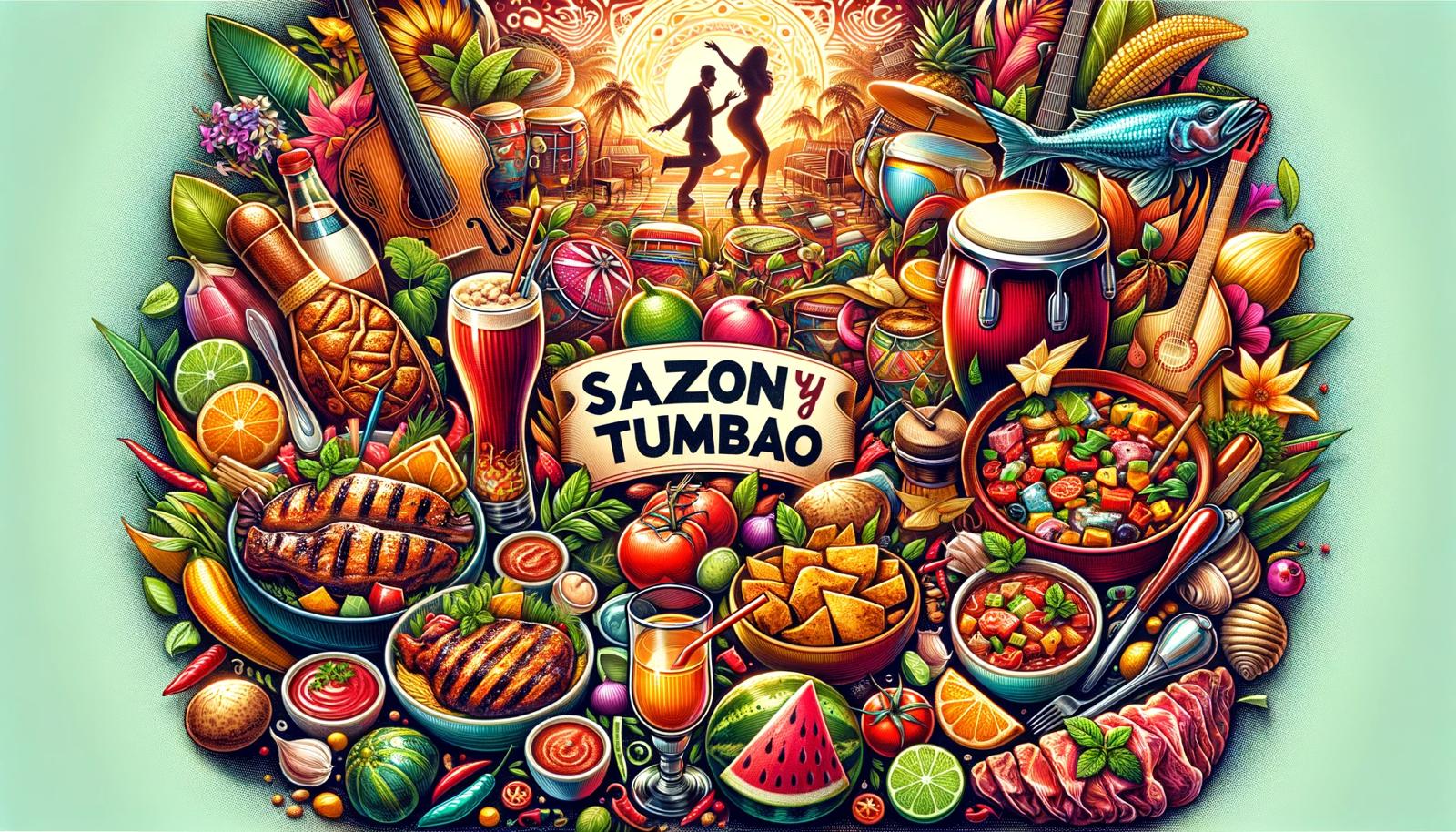
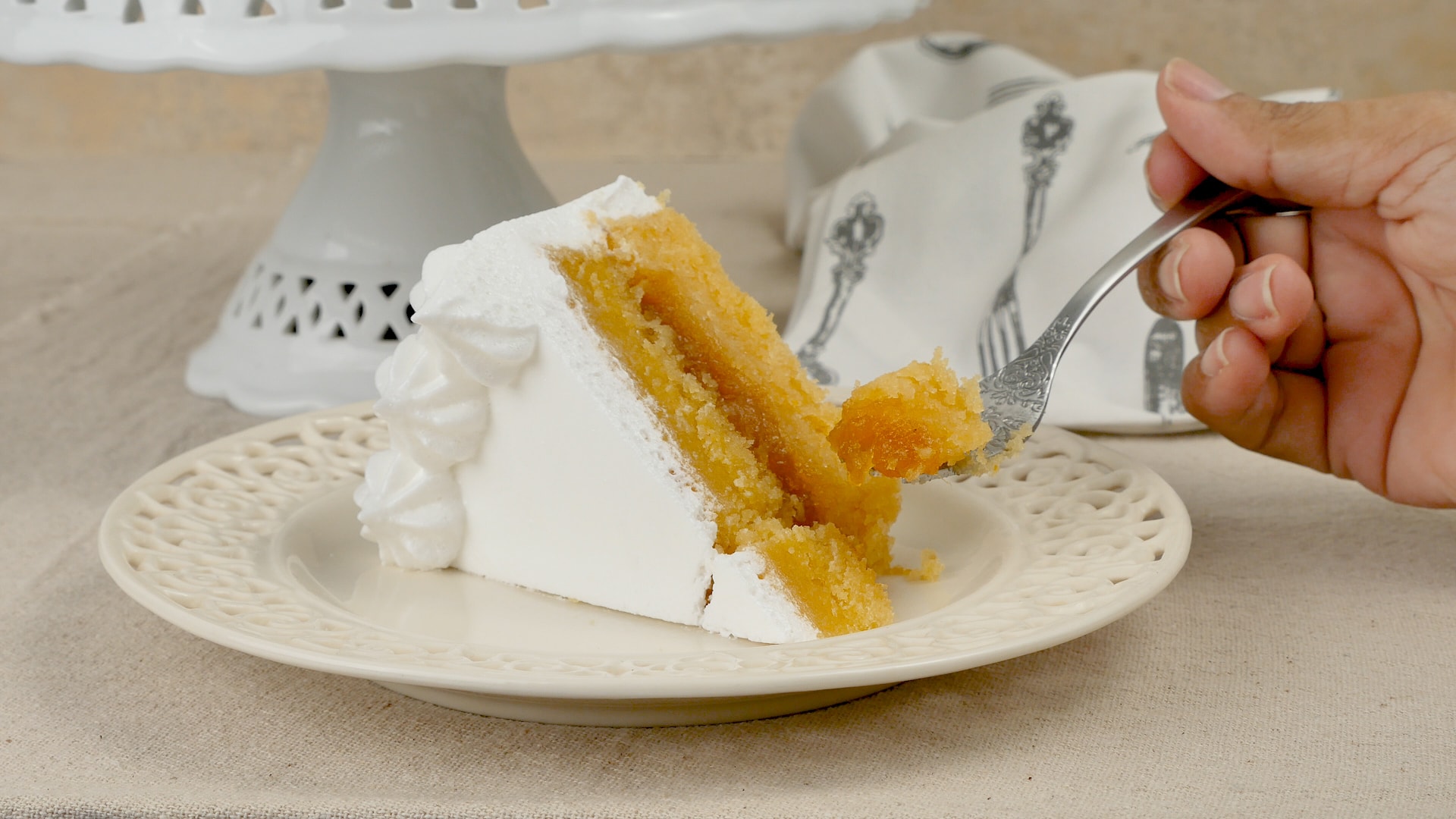
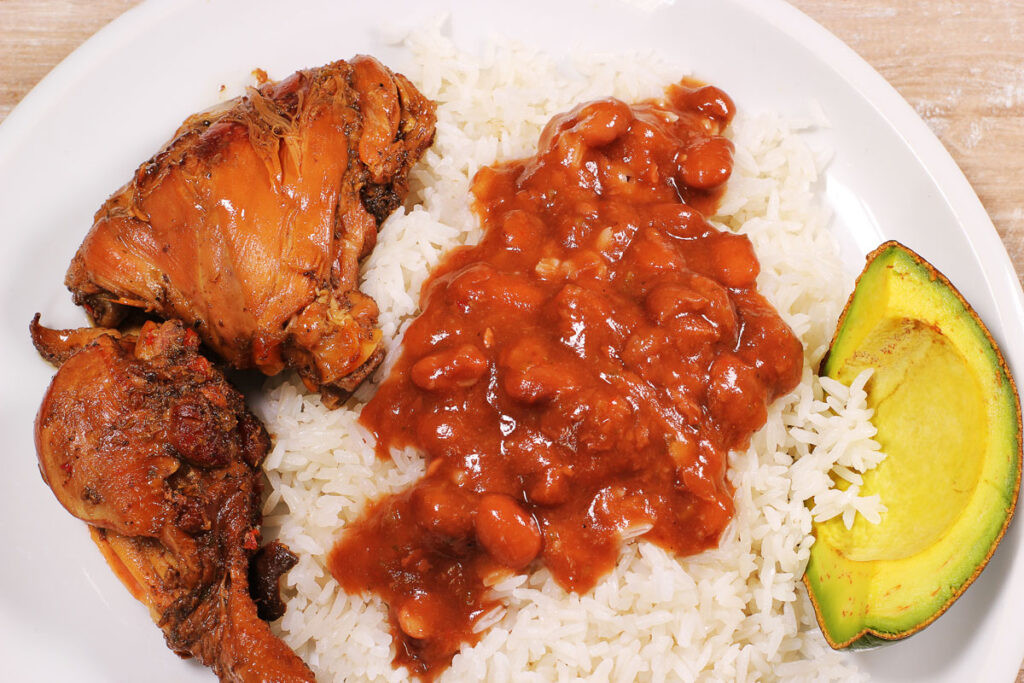
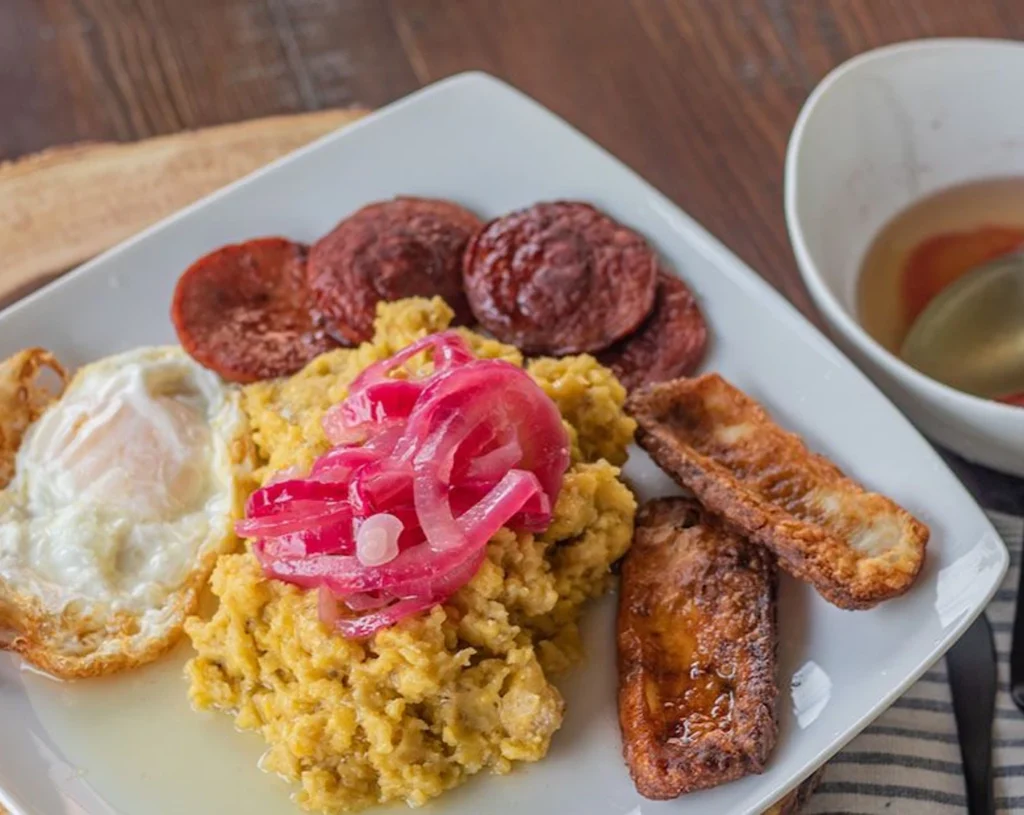
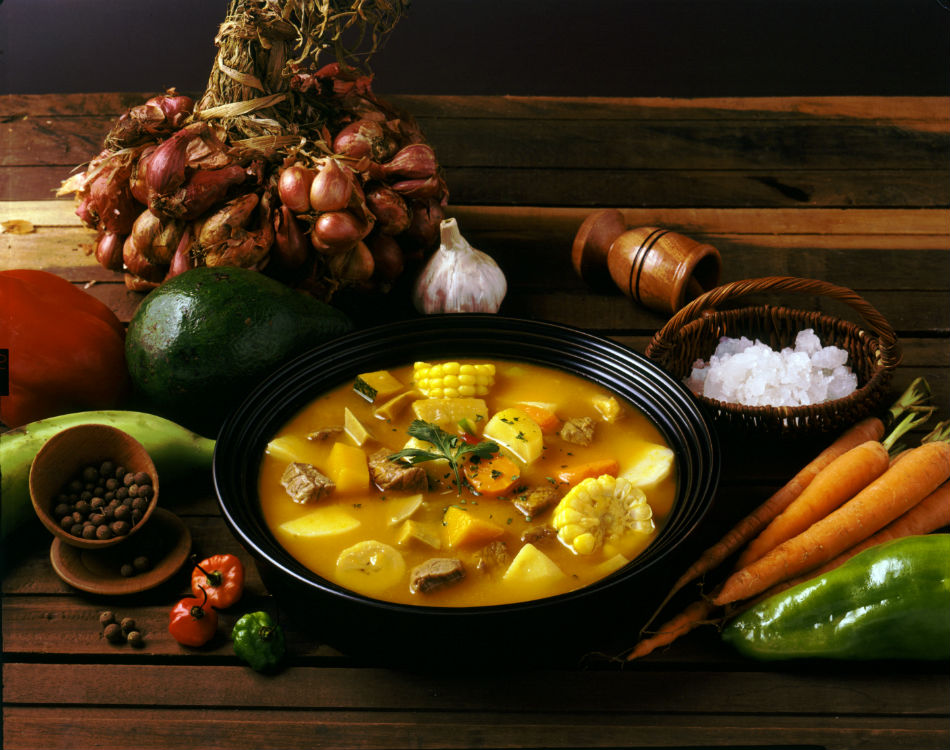
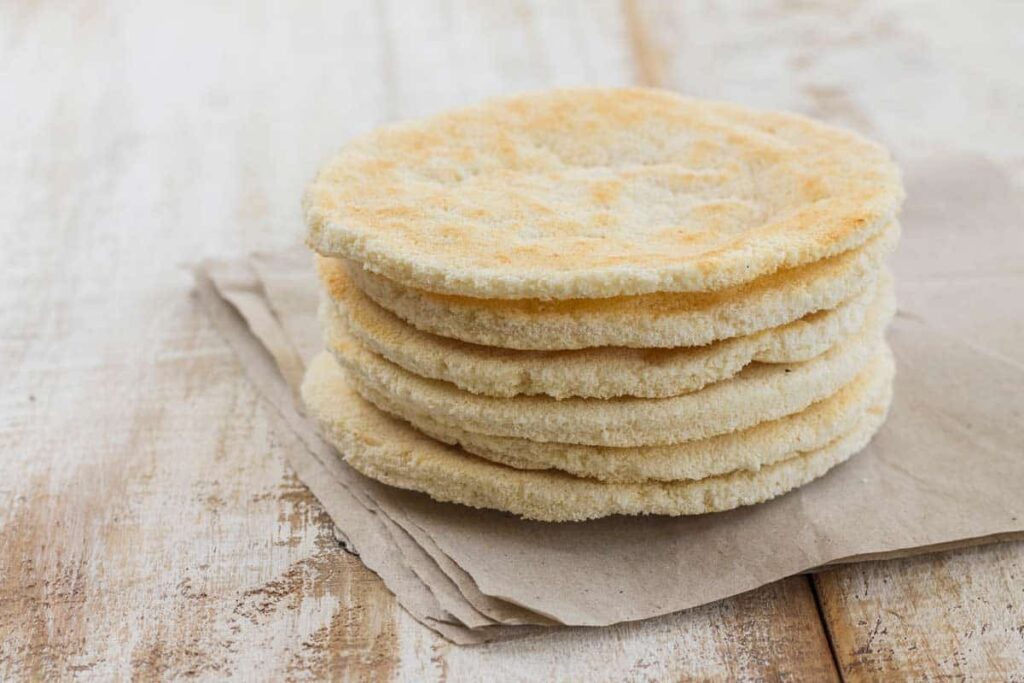
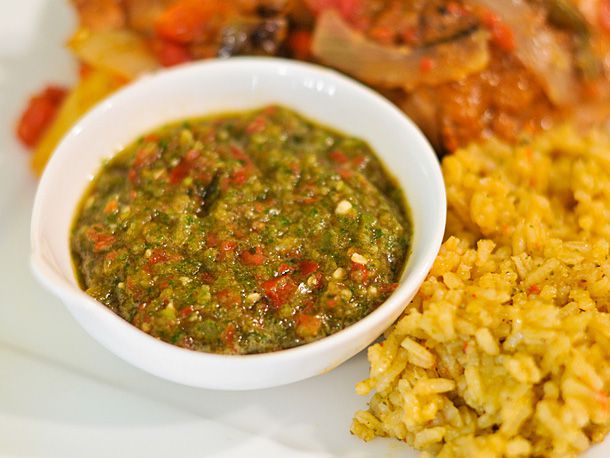
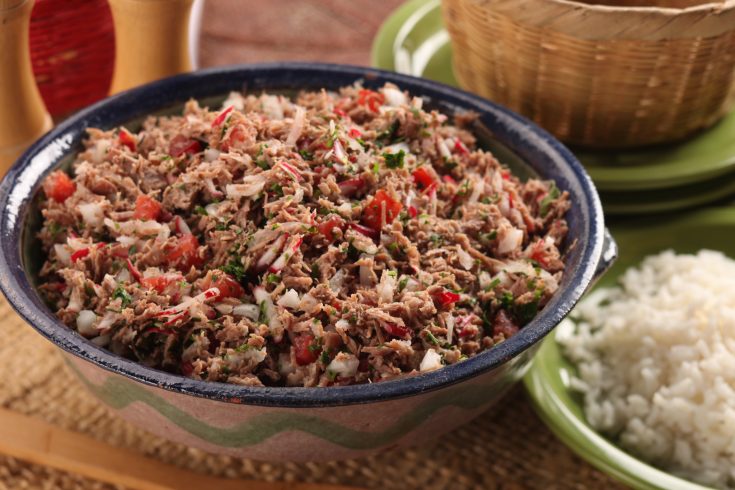

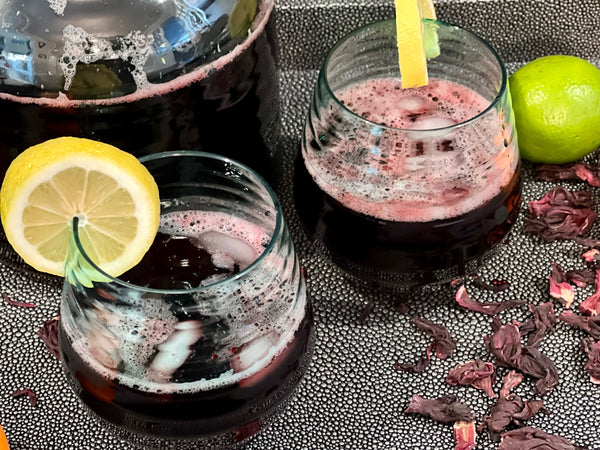

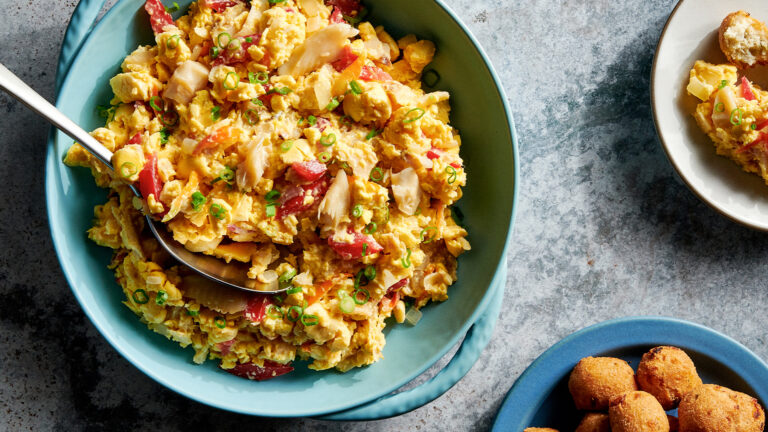
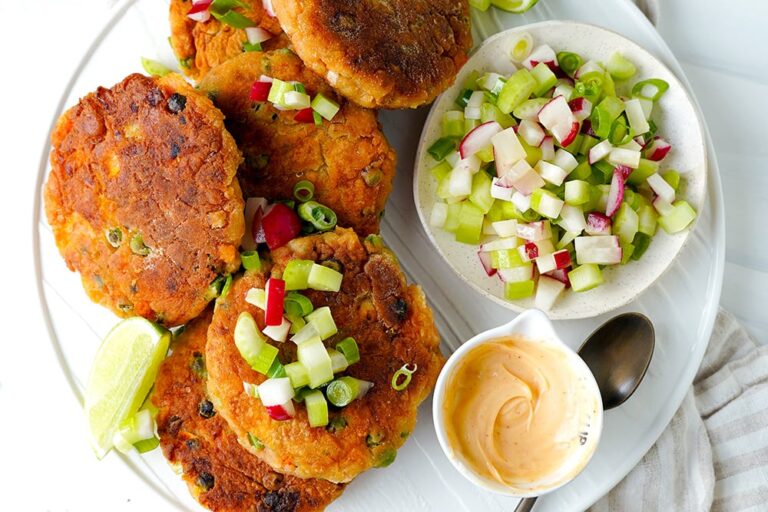
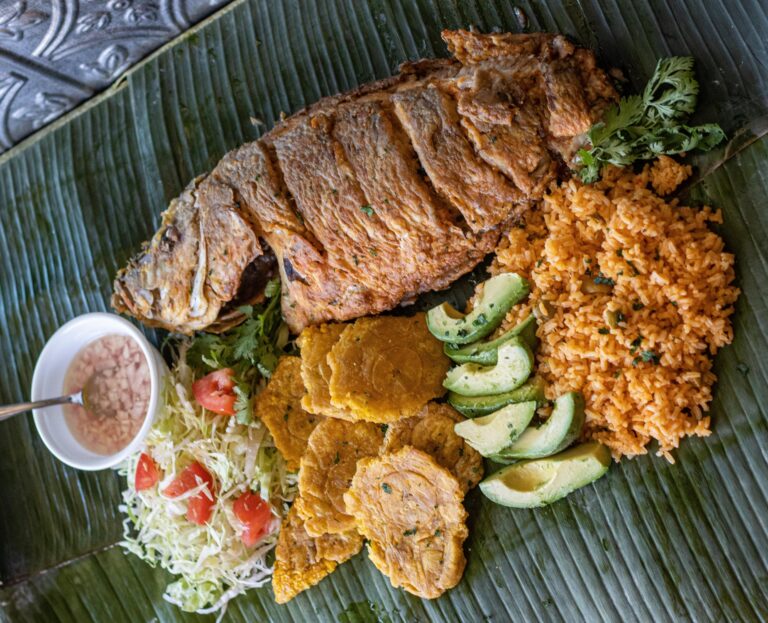
One Comment